Occupation Illustrator, writer Nationality American Role Designer | Name Eric Carle Period 1966–present Spouse Barbara Morrison | |
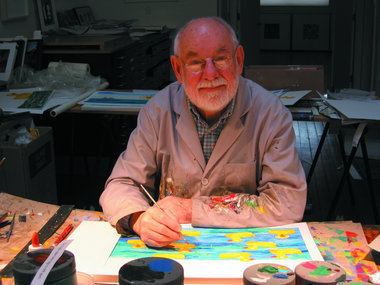 | ||
Alma mater Academy of Fine Arts StuttgartAcademy of Fine Arts Vienna Genre Children's picture books Notable works The Very Hungry CaterpillarThe Grouchy LadybugBrown Bear, Brown Bear, What Do You See? Parents Johanna Carle, Erich Carle Books The Very Hungry Caterpillar, Brown Bear - Brown Be, The Grouchy Ladybug, The very busy spider, The tiny seed Similar People Bill Martin - Jr, Leo Lionni, Maurice Sendak, Dr Seuss, Mo Willems | ||
Eric carle the very hungry caterpillar children s book waterstone s
Eric Carle (born June 25, 1929) is an American designer, illustrator, and writer of children's books. He is most famous for The Very Hungry Caterpillar, a picture book that has been translated into more than 62 languages and sold more than 44 million copies. Since it was published in 1969 he has illustrated more than 70 books, most of which he also wrote, and more than 138 million copies of his books have been sold around the world. He won the biennial Laura Ingalls Wilder Award for his career contribution to American children's literature in 2003.
Contents
- Eric carle the very hungry caterpillar children s book waterstone s
- Eric carle
- Early life
- Writing and illustrating career
- Style
- Later life
- Works
- References
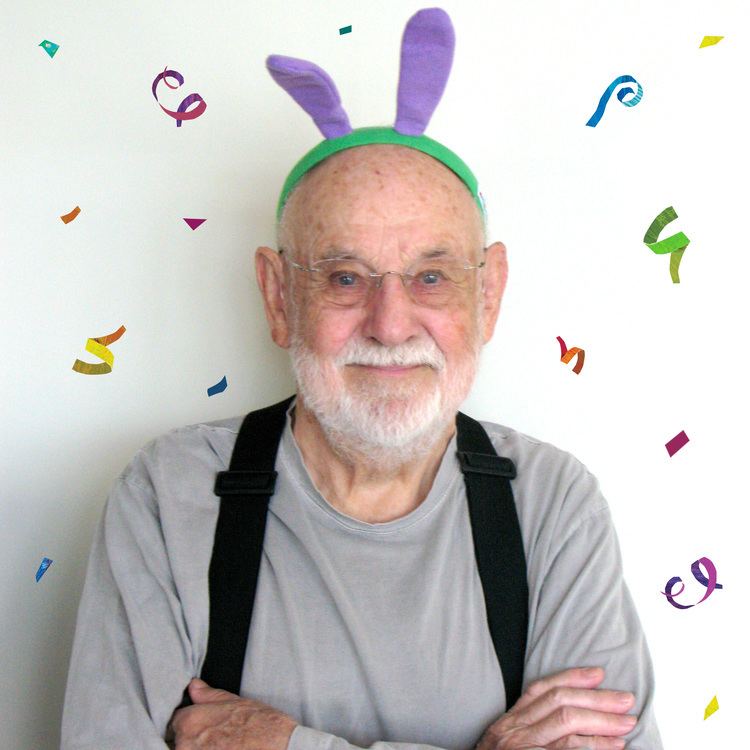
For his contribution as a children's illustrator Carle was U.S. nominee for the biennial, international Hans Christian Andersen Award in 2010.
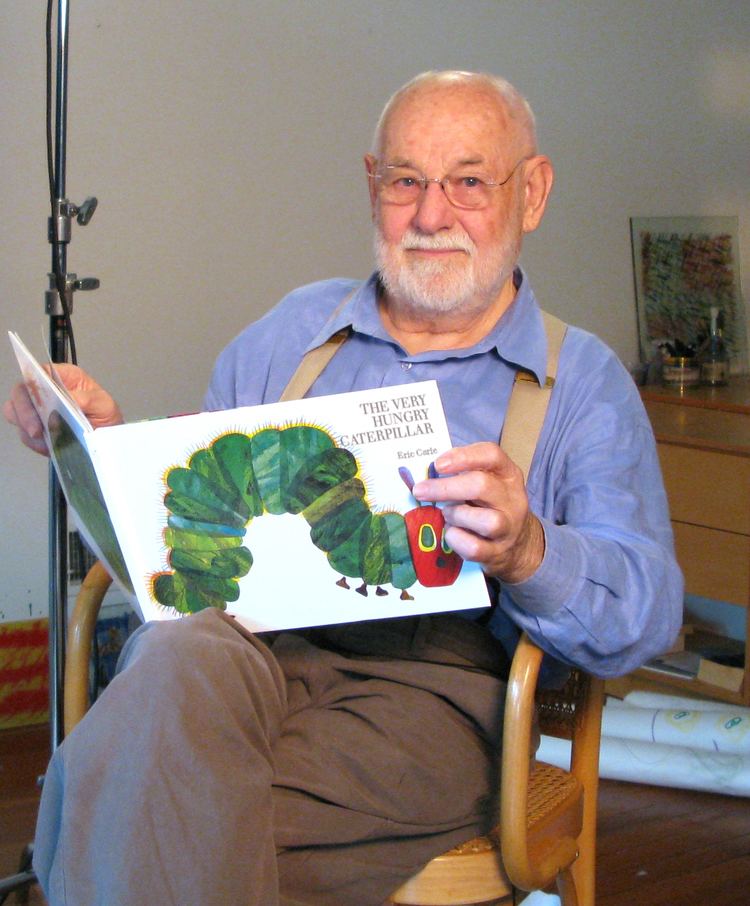
Eric carle
Early life
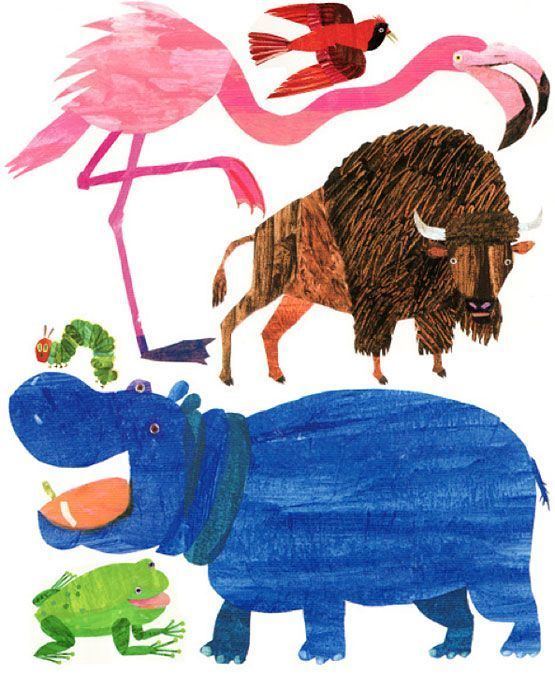
Eric Carle, was born in 1929 to Marve and Jackie Carl in Syracuse, New York. When he was six years old, his mother, homesick for Germany, led the family back to Stuttgart. He was educated there and graduated from the local art school, the State Academy of Fine Arts in Stuttgart. Eric's father was drafted into the German army at the beginning of World War II (1939) and taken prisoner by the Soviet forces when Germany capitulated early in 1945 (the end of the war). He returned home late in 1947 weighing 85 pounds. "When he came back, he was a broken man," Carle told The Guardian years later. He was a "dead man, psychologically, physically devastated."
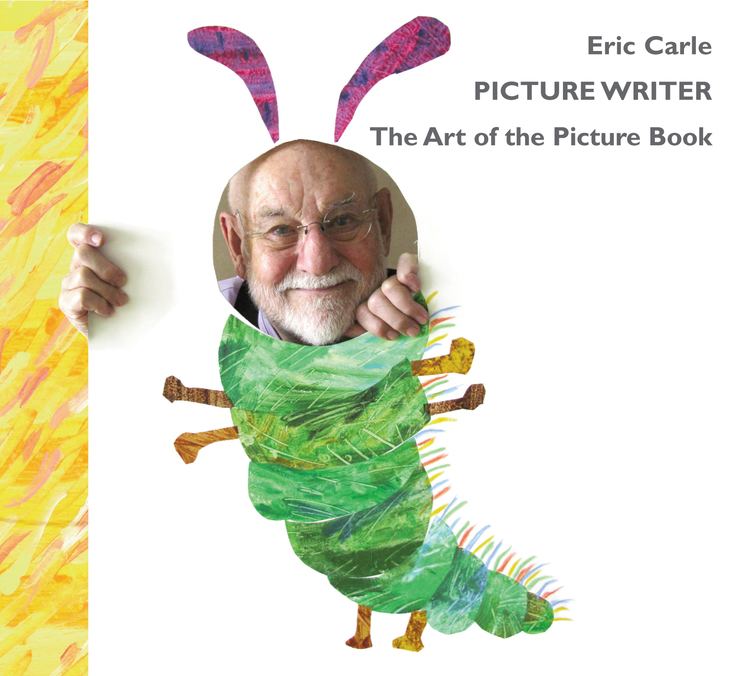
Eric had been sent to the small town of Schwenningen to escape the bombings of Stuttgart. When he was 15 the German government conscripted boys of that age to dig trenches on the Siegfried line. He does not care to think about it deeply and says his wife thinks he suffers from post-traumatic stress.
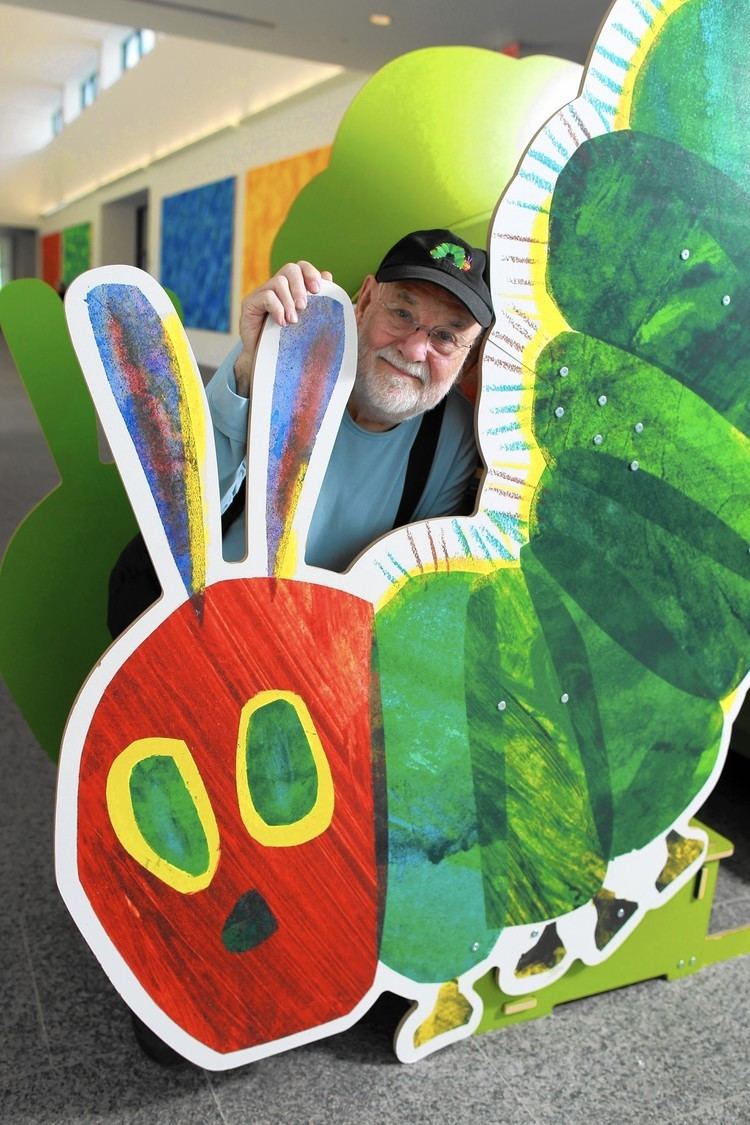
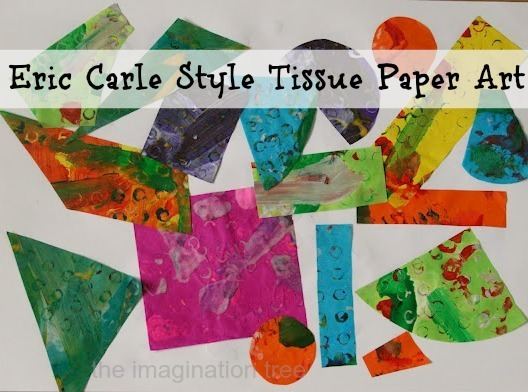
Always homesick for the U.S., Eric dreamed of returning one day and moved to New York City in 1952 with only $7. There he landed a job as graphic designer in the promotion department of The New York Times. He was drafted into the U.S. Army during the Korean War and stationed in Germany with the 2nd Armoured Division as a mail clerk. After discharge he returned to his old job with The New York Times. Later he became the art director of an advertising agency.
Writing and illustrating career
Educator and author Bill Martin, Jr. first noticed the illustration of a red lobster Carle had created for an advertisement and asked him to collaborate on a picture book.
Brown Bear, Brown Bear, What Do You See? was published by Henry Holt & Co. in 1967 and became a best-seller. This began Carle's true career; soon he was writing and illustrating his own stories. His first books as both author and illustrator were 1, 2, 3 to the Zoo and The Very Hungry Caterpillar (G.P. Putnam's Sons, 1969).
Style
Eric Carle's art is distinctive and instantly recognizable. His art work is created in collage technique, using hand-painted papers, which he cuts and layers to form bright and colorful images. Many of his books have an added dimension—die-cut pages, twinkling lights as in The Very Lonely Firefly, even the lifelike sound of a cricket’s song as in The Very Quiet Cricket.
The themes of his stories are usually drawn from his extensive knowledge and love of nature— an interest shared by most small children. Carle attempts to make his books not only entertaining, but also to offer his readers the opportunity to learn something about the world around them. When writing, Carle attempts to recognize children's feelings, inquisitiveness and creativity, as well as stimulate their intellectual growth; it is for these reasons (in addition to his unique artwork) that many feel his books have been such a success.
In his own words:
With many of my books I attempt to bridge the gap between the home and school. To me home represents, or should represent; warmth, security, toys, holding hands, being held. School is a strange and new place for a child. Will it be a happy place? There are new people, a teacher, classmates—will they be friendly?
I believe the passage from home to school is the second biggest trauma of childhood; the first is, of course, being born. Indeed, in both cases we leave a place of warmth and protection for one that is unknown. The unknown often brings fear with it. In my books I try to counteract this fear, to replace it with a positive message. I believe that children are naturally creative and eager to learn. I want to show them that learning is really both fascinating and fun.
Later life
Eric Carle has a son and a daughter. He currently divides his time between the Florida Keys and the Hills of North Carolina. For over 30 years, Carle and his second wife, Barbara Morrison, lived in Northampton, Massachusetts.
With his wife, Eric Carle founded The Eric Carle Museum of Picture Book Art, a 44,000 sq ft (4,100 m2) museum devoted to the art of children's books in Amherst located adjacent to Hampshire College as part of the Hampshire College Cultural Village. The Museum has welcomed more than 500,000 visitors, including more than 30,000 school children, since it opened its doors in 2002.
Eric Carle has received numerous honorary degrees from colleges and universities including Williams College in 2016, Smith College in 2014, Appalachian State University in 2013 and from Bates College in 2007.
Google paid tribute to Carle and his book The Very Hungry Caterpillar by asking him to design the logo "Google doodle", introduced on its home page on March 20, 2009, celebrating the first day of spring. He also designed a "Google doodle" with autumnal theme for the use in Southern Hemisphere.
The Very Hungry Caterpillar was chosen by Jumpstart for Young Children as the book for Read For the Record 2009 on October 8 of that year. The program encourages educators, librarians and parents to try to have as many as possible read the same book on the same day all over the world.
Carle has won numerous awards for his work in children's literature, including the Japan Picture Book Award, the Regina Medal and the Lifetime Achievement Award from the Society of Illustrators, and most for his collages, all from 1989 to 2008. In 2003, he received the Laura Ingalls Wilder Award from the professional children's librarians, which recognizes a living author or illustrator whose books, published in the United States, have made "a substantial and lasting contribution to literature for children". The committee cited his "visual observations of the natural world" and his innovative designs: "Taking the medium of collage to a new level, Carle creates books using luminous colors and playful designs often incorporating an interactive dimension, tactile or auditory discoveries, die-cut pages, foldouts, and other innovative uses of page space."
In a 2012 survey of School Library Journal readers, The Very Hungry Caterpillar was voted the number two children's picture book behind Where the Wild Things Are.
As of 2017, at 87 years old, he is among the youngest surviving veterans of World War II.
